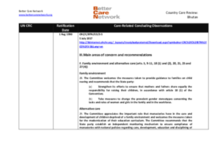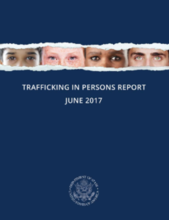Displaying 131 - 140 of 341
This document includes the full transcript of the public hearings of the Australian Parliamentary Inquiry in preparation for a Modern Slavery Act.
This article explores the protection of smuggled and trafficked unaccompanied minors under the United Nations Protocols against the Smuggling of Migrants and Trafficking in Persons and calls for a more substantive protection-based framework to address the issue.
This country care review includes the care-related Concluding Observations adopted by the Committee on the Rights of the Child during the seventy-fifth session (15 May 2017 - 02 Jun 2017) of the Convention on the Rights of the Child.
In this video, Kate van Doore describes the process of 'paper orphaning,' a term coined to characterize how children are recruited and trafficked into orphanages to gain profits through international funding and orphanage tourism.
This bulletin is intended for child welfare agency leadership in the US and explores how child welfare agencies can support children who have been victimized as well as children that are at greater risk for future victimization.
This policy outlines the issues of voluntourism and orphanages in relation to child protection, and states the criteria by which organisations (private commercial companies, social enterprises and charities) involved in voluntourism activities may apply to join The Code.
This bulletin for professionals in the child welfare field explores how caseworkers can identify and support children who are victims of human trafficking as well as children who are at greater risk for future victimization.
The Trafficking in Persons Report is an annual publication of the U.S. Department of State, providing a snapshot of human trafficking around the world with attention to key issues, trends, standards, and updates.
This Girls Not Brides presentation provides an overview of child marriage, its impact and relationship to violence against children and alternative care, offering recommendations for research, policy, and practice at global, regional, and national levels when it comes to preventing child marriage and responding to those impacted.
This report compiles and analyses the most robust and up-to-date child protection data that exists across the 4 nations in the UK for 2017.








